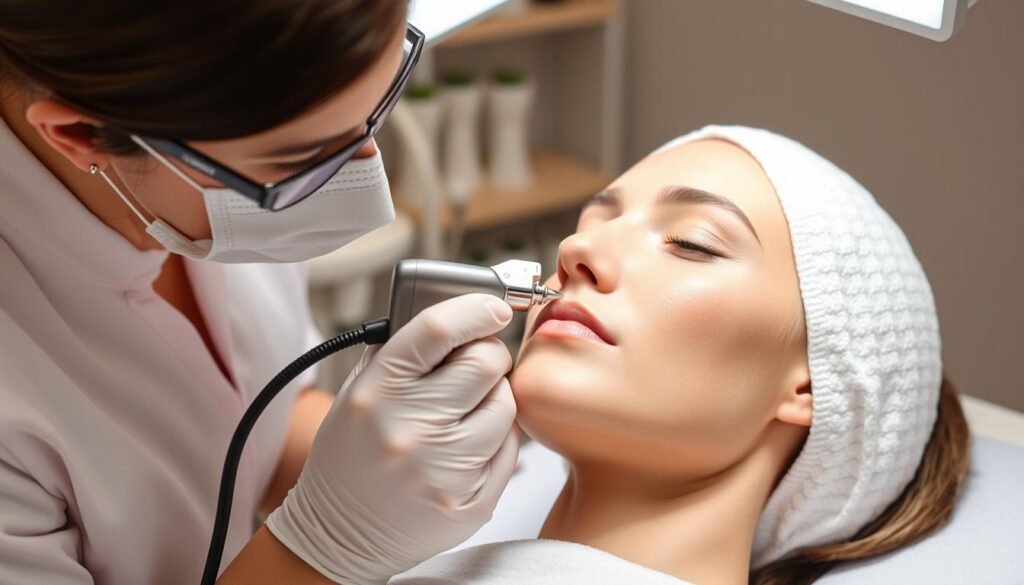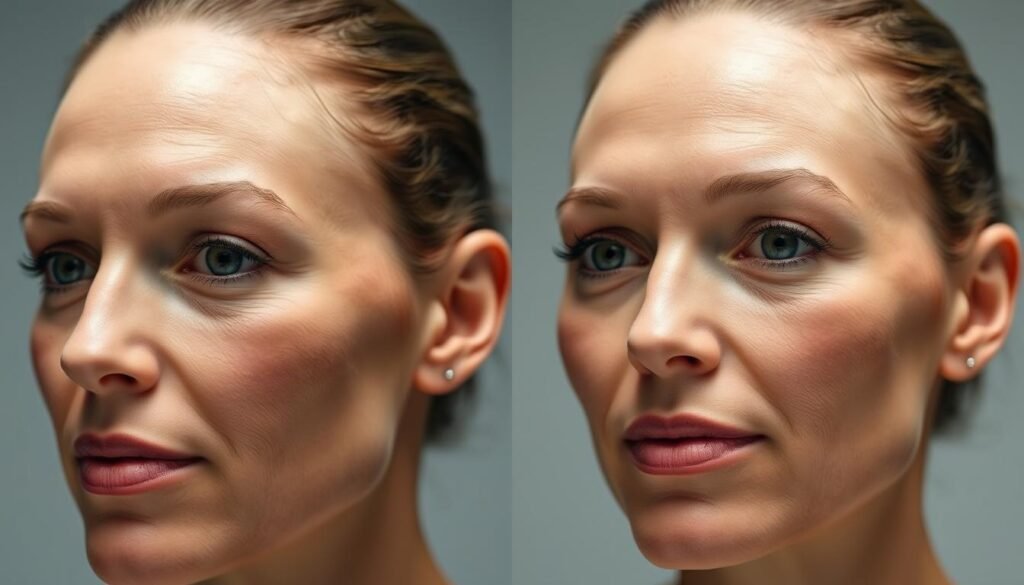Rejuvenating your skin without invasive surgery is now possible with microneedling, a revolutionary technique that has gained popularity for its effectiveness in addressing various skin concerns.
Microneedling works by creating controlled micro-injuries to the skin, stimulating the body’s natural healing response, which leads to increased collagen and elastin production, resulting in a healthier and more youthful appearance.
Throughout this article, we’ll explore the transformative power of microneedling treatments, including before and after results, and discuss the versatility of this procedure in treating different areas of the face and addressing multiple skin concerns simultaneously.
Key Takeaways
- Understanding microneedling as a non-invasive skin rejuvenation technique.
- How microneedling stimulates collagen and elastin production.
- The benefits of microneedling for various skin concerns.
- What to expect from microneedling treatments and results.
- The versatility of microneedling for different facial areas.
Understanding Microneedling Treatment

To understand microneedling, it’s crucial to know how this procedure works and its benefits for the skin. Microneedling is a minimally invasive treatment that uses tiny needles to create micro-channels in the skin, promoting rejuvenation.
How the Procedure Creates Skin Channels
The microneedling process involves creating micro-injuries in the skin using specialized devices like SkinPen Precision. These micro-injuries stimulate the body’s natural healing process, creating temporary small microscopic channels.
Collagen and Elastin Production Benefits
This procedure activates the body’s natural skin-healing power to increase collagen and elastin production. As a result, the skin returns to a healthier-looking and youthful appearance. Increased collagen production helps restore skin firmness and elasticity.
Impressive Microneedling Before and After Results
Microneedling before and after photos demonstrate the treatment’s capability in addressing various skin concerns. A notable example is a 68-year-old female patient who underwent three microneedling treatments spaced six weeks apart, with impressive results.
Wrinkle Reduction and Age Spot Improvement
Microneedling effectively reduces fine lines and wrinkles by stimulating collagen production in the dermis layer. The treatment also improves age spots through enhanced cell turnover and improved penetration of lightening agents.
Acne Scar Treatment Success
The treatment transforms acne scars by breaking up scar tissue and stimulating new collagen formation within atrophic scars. Different types of acne scars, such as ice pick, boxcar, and rolling scars, show significant improvement.
Skin Texture and Tightening Effects
Microneedling improves overall skin texture by addressing enlarged pores, rough patches, and uneven tone. The collagen induction process also achieves skin tightening effects, particularly visible in the lower face and neck areas.
Maintaining results at home between professional treatments is crucial. Using appropriate skincare products and following a consistent routine can help prolong the benefits of microneedling.
Treatment Process and Recovery

To achieve optimal results from microneedling, it’s essential to understand the treatment schedule and recovery process. The microneedling procedure is typically performed in a series of sessions, with the exact number and frequency determined by the individual’s skin concerns and goals.
Typical Treatment Schedule and Needle Depths
The standard treatment schedule for microneedling involves 3-6 sessions, spaced 4-6 weeks apart. This timing allows for optimal collagen production and skin renewal. Needle depths are customized based on the treatment area and skin concern, ranging from 0.5mm for delicate areas around the eyes to 1.5-2.0mm for acne scars and deeper wrinkles.
Enhanced Results with PRP Combination
Combining microneedling with PRP (Platelet-Rich Plasma) can enhance results by delivering concentrated growth factors directly to the treatment area. PRP is collected and prepared from the patient’s own blood and applied during or immediately after the microneedling procedure. This synergistic approach accelerates healing and boosts collagen production, leading to improved skin texture and appearance.
Conclusion
By stimulating collagen production, microneedling provides a science-backed solution for skin rejuvenation. This minimally invasive procedure effectively addresses various skin concerns, including acne scars and overall texture.
To achieve optimal results, it’s essential to commit to the full treatment protocol and maintain a proper home skincare routine. Readers are encouraged to contact qualified skincare professionals to develop a personalized treatment plan and explore complementary treatments that can enhance microneedling results.


